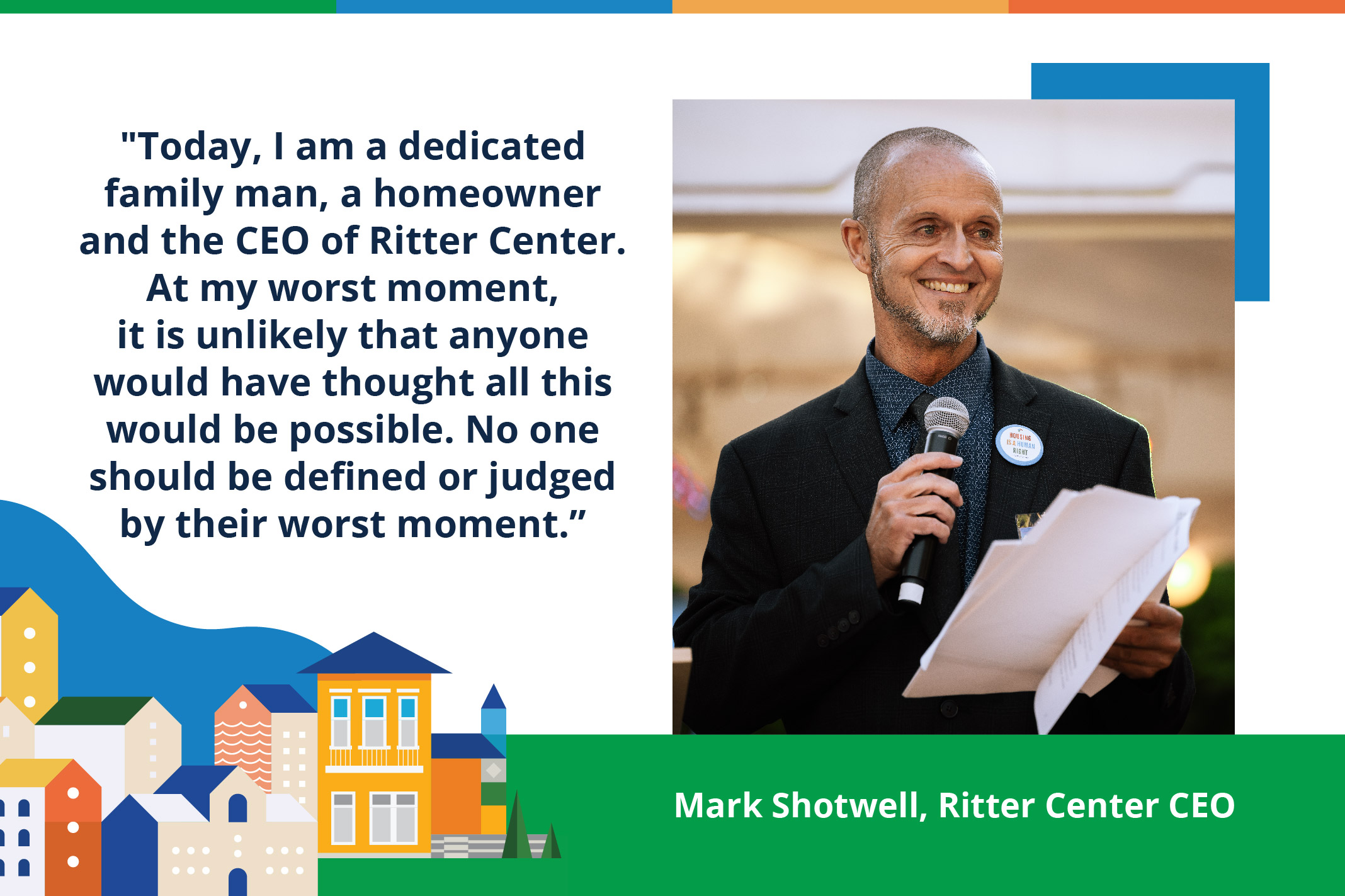
We Can Prevent Overdoses in Marin County Through Narcan Training
Towards the end of 2020, former Lead Medical Assistant Brittany Austin was hard at work at her job at Ritter Center when she and the security guard Donte Henderson realized someone was overdosing in front of the building. They administered Narcan to the person overdosing. By the time emergency medical services arrived, the patient was conscious again. Their efforts saved this person’s life.
This story is a prime example of why Ritter Center is so grateful to Chief of Addiction Services for Marin County Behavioral Health and Recovery Services Dr. Jeff DeVido for providing the training for our staff on the proper use of Narcan and providing Narcan supplies.
Together we can prevent overdoses in Marin County through training and dissemination of Narcan to first responders, health care workers, and homeless system staff.
“Time is brain,” emphasizes Dr. DeVido meaning someone can die because they stop breathing during an opioid overdose. “We need to get Narcan out in the community to target strategically first and foremost those who are most likely to encounter individuals having an overdose, like law enforcement. We equipped and trained Marin police on Narcan under the understanding that law enforcement is often on the scene before EMS. Slowly but surely, your organs die if you don’t have oxygen. Your brain is the first thing to be sensitive to that crisis. If you can get Narcan to someone in the first few minutes, it’s critical and can save their life.”
The idea is to get Narcan into as many hands as possible so they can administer this medication as quickly as possible to someone dying or experiencing major medical consequences of not breathing. If you don’t breathe, you die. It’s that simple. Narcan is intended to reverse the overdose that has stopped someone from breathing.
“After we worked with the law enforcement community, we started to expand out in the community and recognized that clinics like Ritter Center are also in a high risk position and need this training. I would like to see Narcan as widely available as CPR instructions and fire extinguishers,” remarked Dr. DeVido.
“As for the misconception that Narcan availability encourages addiction, I pose this question. Did the institution of widespread availability of fire extinguishers make people less safe and take more risk with fire? It’s the same with Narcan. Just because it’s available doesn’t make people want to overdose and die.”
People know there is a risk in using opioids. Narcan availability studies show that more widespread availability doesn’t necessarily lead to more risky use of opioids. It’s important to recognize that Fentanyl has become much more available in the illicit drug market. Fentanyl has found its way into almost all of the drugs out in the community. Therefore, what happens is that often someone thinks they are using just methamphetamine but Fentanyl is also in there. The difference between a survivable exposure to heroin, for example, and a lethal dose of heroin might be 1 gram to 2-3 grams, respectively. That is a noticeably different amount. But the difference with Fentanyl between a survivable and lethal exposure might be as tiny as half a grain of salt. There’s a much smaller buffer, therefore, between surviving and dying from fentanyl exposure relative to other opioids.
Add in the likelihood of drugs containing Fentanyl and it comes down to this: if it has one grain of Fentanyl you survive, but if it contains a grain and a half, you die.
“This changes the discussion, doesn’t it? You could be using anything and this happens to you. You might not even know. It wakes us up to redouble our efforts and recommitment. You don’t know when it can happen to you or the person next to you. You could be inadvertently exposed yourself or someone you love could be,” urges Dr. DeVido.
Narcan is not treatment but a life-saving tool so that an individual has an opportunity to engage in treatment. Narcan does one thing only — it reverses opioid overdoses. It doesn’t work on alcohol or other drugs. There are no discernible side effects. It powerfully reverses the binding of opioids in the brain receptors and allows breathing to start again.
Part of the reason this program is so critical is that 1 in 4 Marin adults needs help for drug and alcohol misuse. Alarmingly, increasing numbers of children under 18 are following suit, easily accessing prescription narcotics in their homes or through peers in schools. In 2012, more people died in Marin from drug overdoses than of breast cancer or automobile crashes, and the majority of overdoses involved prescription drugs.
RxSafe Marin has been established with the following goal: Marin County will reduce prescription drug misuse and abuse through measurable strategies and 12-month action plans that address factors across the continuum.
“This issue touches so many in Marin, beyond those with personal or family experience,” observed Public Health Officer Dr. Matt Willis. “We feel that RxSafe Marin is breaking new ground by bringing together key voices from across the community – law enforcement, schools, community groups and medical personnel – to design some real solutions.”
Building on the work of community activists, the Marin County Department of Health and Human Services (HHS), the Marin County District Attorney’s Office, the Marin County Public Defender’s Office, and the Marin County Office of Education each have officials co-leading RxSafe Marin Action Teams alongside families, youth, pharmacists and health providers.





